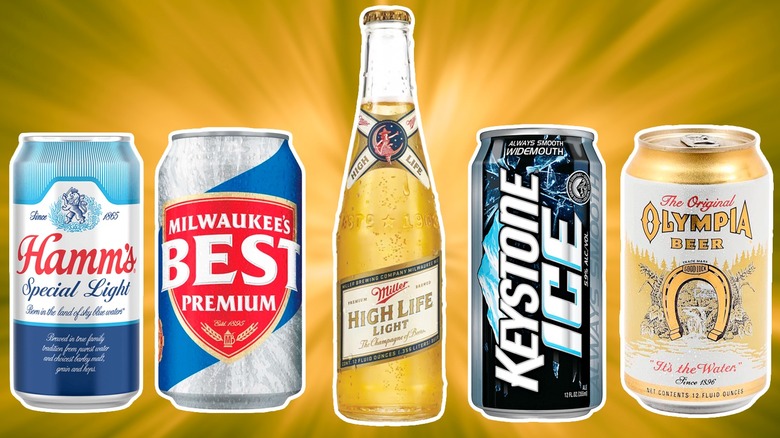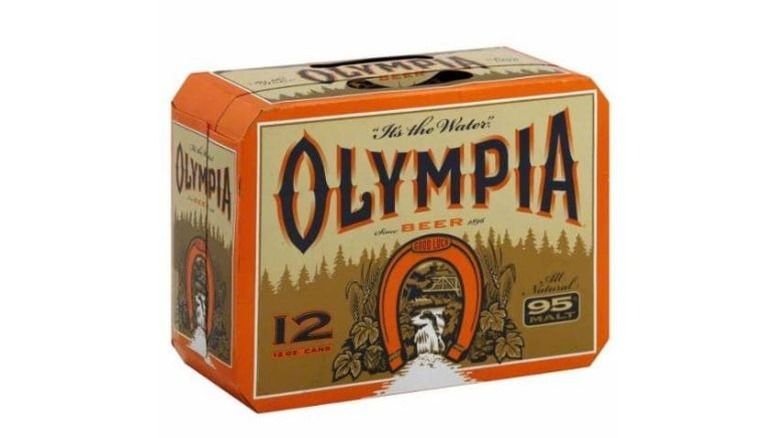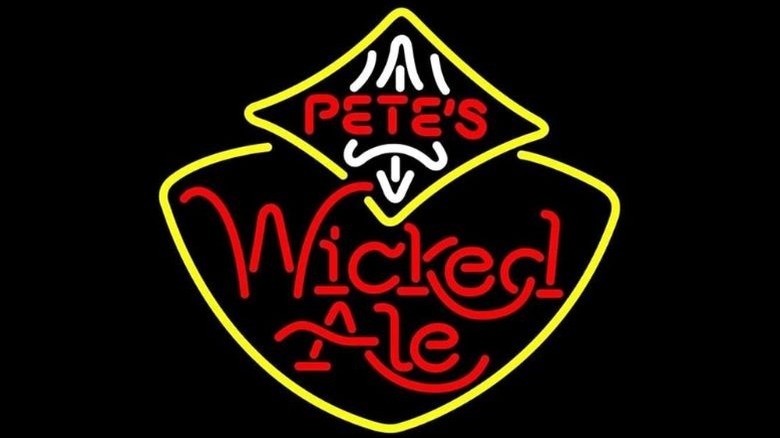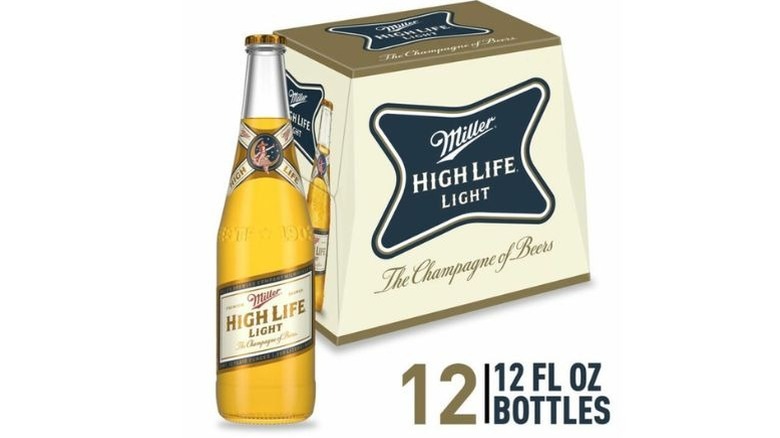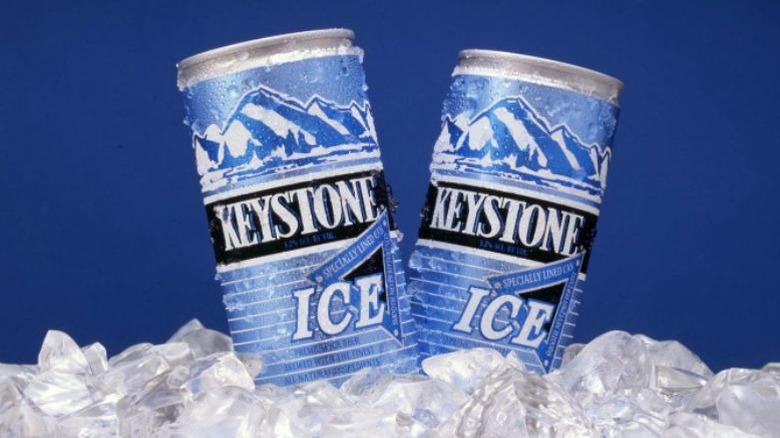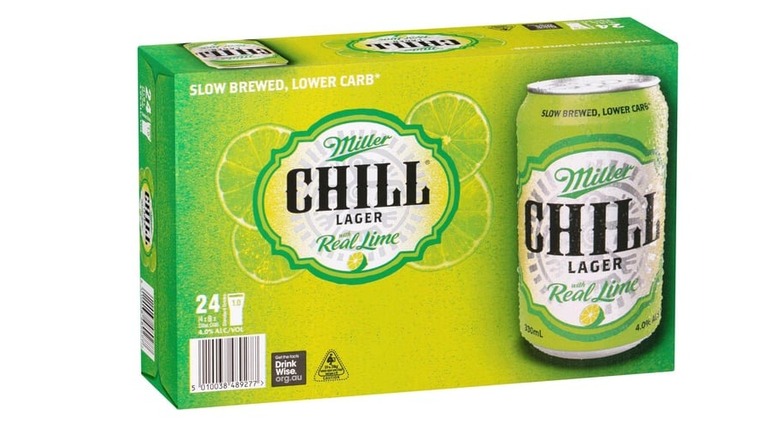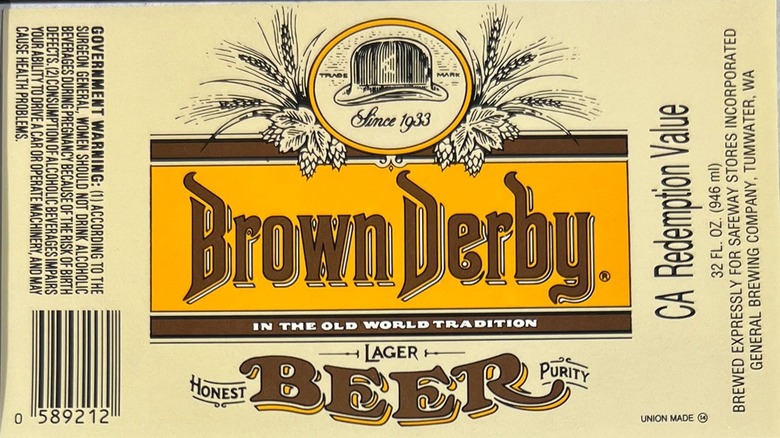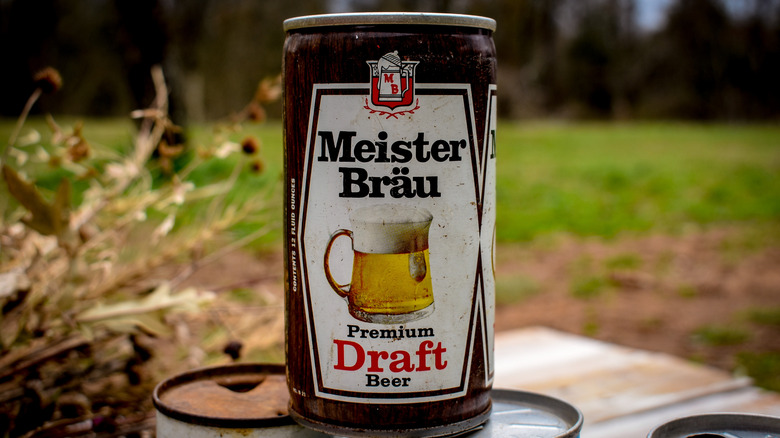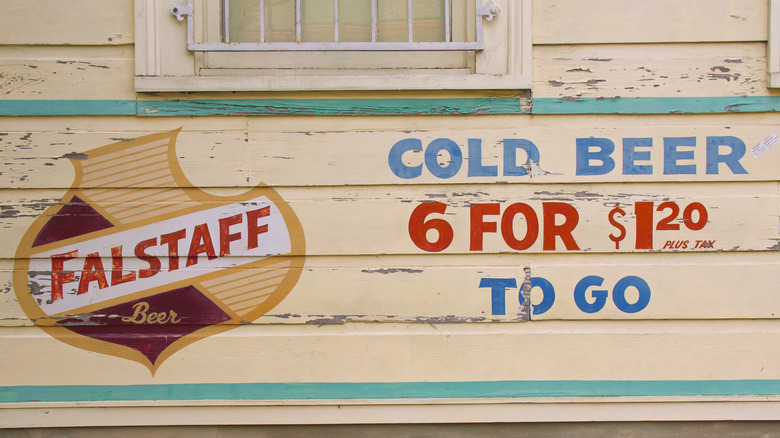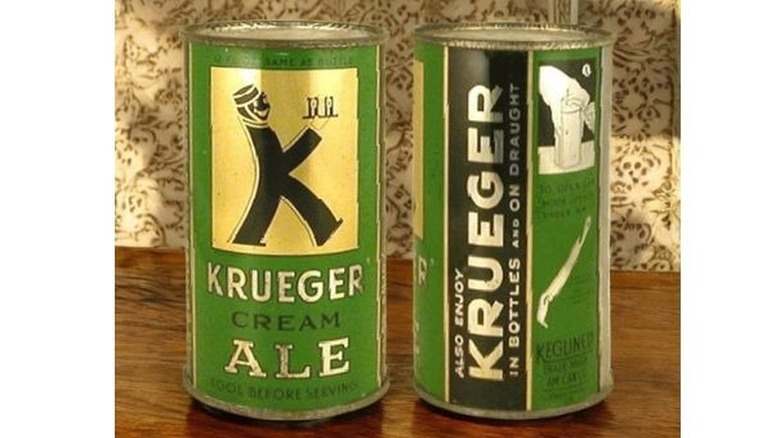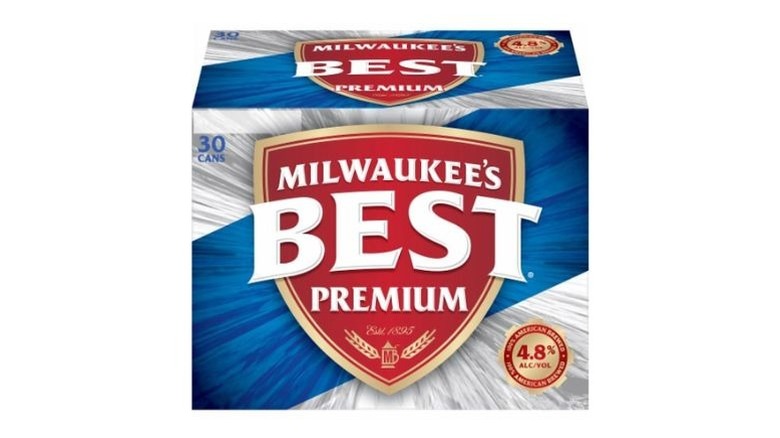13 Discontinued Beers We're Never Getting Back
We may receive a commission on purchases made from links.
Thirteen beers that Americans once enjoyed are now gone, but they're not forgotten. Over the years, many of these beers accompanied lively chats in crowded bars and quiet gatherings at home, and although people loved these brews, they've now vanished. No matter how hard you search, you won't find cans or bottles of these discontinued beer brands on store shelves or in local pubs.
Why did these beer brands disappear? Well, some fell victim to changing trends, while others just couldn't keep pace with new flavors from competitors. Demand shifted, and new brews took center stage. Yet each of these beers has its own story.
As with other food and beverage items, each discontinued beer brand gives us a glimpse into America's history and reminds us that nothing stays the same. These beers mirror changing tastes over time. We researched the rise and fall of these beers that now exist only in our memories to discover the origin story of each, the brewery behind it, and why you won't find these beers on the shelf in 2025.
Bud Dry
Bud Dry was Bud Light's pale ale cousin and Anheuser-Busch's answer to Michelob Dry. This pale lager was introduced at a time when dry beers like Michelob Dry were starting to make a splash in the market, largely influenced by Japanese innovations like Asahi Super Dry. It first appeared in the United States in April 1990, brewed by Anheuser-Busch at its iconic St. Louis brewery in Missouri.
Anheuser-Busch launched Bud Dry to capture the growing interest in beers with a crisp, less-sweet profile, positioning it between the classic Budweiser and the lighter Bud Light. Its signature slogan, "Why ask why? Try Bud Dry," was designed to arouse curiosity and appeal to a new wave of beer drinkers eager to try something different or to find a suitable pale ale to enjoy with spicy dishes that were growing in popularity.
Dry beer fans enjoyed the beer for about 20 years before Bud Dry was quietly discontinued in December 2010. With the launch of Bud Ice in 1994, Bud Dry's marketing push began to wane as the company shifted its focus. Although initially backed by a large marketing budget and test market success, Bud Dry couldn't maintain its popularity in a competitive market with similar labels like Michelob Dry.
Olympia Beer
Known for its distinctive yellow cans and yellow beer, Olympia Beer was an icon of the Pacific Northwest beer market for over a century. Brewed by the Olympia Brewing Company in Tumwater, Washington, this classic brew was introduced to celebrate the region's pristine water — earning it the tagline, "It's the Water." Designed as a regional alternative to larger national brands, Olympia Beer quickly developed a loyal following among locals. Its crisp, well-balanced flavor suited Washington beer drinkers, making it a staple in neighborhood bars and family gatherings alike.
After more than 125 years of production, shifting market trends, corporate restructuring, and fierce competition from major brewing conglomerates forced Olympia Beer to pause production in 2021. While the beer was never officially "discontinued," its production halt marked the end of an era for a beer that once symbolized regional pride and the rich heritage of local craft. Today, fans still remember Olympia Beer for its unique taste and the sense of community it fostered. Its story serves as a reminder of the challenges heritage brands face in a fast-changing industry and the enduring impact of locally crafted beer on regional identity.
Pete's Wicked Ale
Purported to be the first American brown ale, Pete's Wicked Ale was bottled in Connecticut from the mid-1980s to 2011, making its mark during the early days of America's craft beer revolution. This brown ale, brewed by the independent Pete's Brewing Company, burst onto the scene in the early 1990s with a bold flavor and robust character that set it apart from the lighter lagers dominating the market. It was introduced at a time when consumers were beginning to want richer, more flavorful brews, and it quickly attracted the attention of beer drinkers looking for an authentic craft beer experience. The beer's distinctive taste and artisanal appeal helped it climb the ranks, eventually becoming the second-largest craft beer brand in the United States.
Eventually, ownership changes and shifting consumer tastes took their toll. After being acquired by Gambrinus Company in 1998, the new owners made alterations to the original recipe. This move was unpopular among loyal fans who preferred the original taste of Pete's Wicked Ale. Over time, as the craft beer market evolved and preferences moved away from traditional brown ales, Pete's Wicked Ale struggled to maintain its popularity. Production finally came to a halt in 2011 after roughly two decades in the market. Today, Pete's Wicked Ale is remembered as a craft beer pioneer and a product that helped shape a new era of American brewing. It also serves as a cautionary tale about the risks of recipe changes in a passionate market.
Miller High Life Lite
Miller High Life Lite debuted in the United States in 1994 at the Miller Brewing Company's historic facility in Milwaukee, Wisconsin. Developed as a lighter alternative to the iconic Miller High Life, which was long celebrated as "The Champagne of Beers," this version aimed to meet the growing demand for low-calorie, lower-carbohydrate options without sacrificing flavor. By using the same traditional brewing techniques as its full-calorie counterpart, Miller High Life Lite was designed to deliver a crisp, refreshing taste in a lighter body, appealing to health-conscious drinkers.
With just 4.1% alcohol, this light version of the popular Miller High Life was produced from 1994 through 2021. Miller High Life Lite carved out a niche among health-conscious consumers looking for a balanced beer they could enjoy without adding carbs and calories. However, as market dynamics shifted in the early 2000s, the product faced stiff competition from other popular light beers such as Bud Light. Changing consumer preferences and a strategic refocusing by MillerCoors on core brands led to the gradual phase-out and ultimate discontinuation of Miller High Life Lite in 2021. Although it no longer graces store shelves, it remains an early example of the brewing industry's pivot toward more calorie-conscious options.
Keystone Ice
Keystone Ice beer was an experimental beer from Coors first introduced in 1989. Crafted in the tradition of American value beers, Keystone Ice underwent a unique process that set it apart from other beers. First, they partially froze the beer and removed the ice to concentrate its flavor, creating the unusual Keystone Ice flavor. This ice‐brewing method produced a crisp, clean taste with a slightly higher punch than its standard counterparts.
Launched to capture the growing consumer interest in ice beers such as competitor labels Bud Ice and Miller Ice, Keystone Ice offered a refreshing, affordable alternative for budget‐conscious drinkers. Despite an enthusiastic start and a loyal fan base, Keystone Ice eventually fell victim to evolving beer market preferences. As the mid‑90s ice beer craze died down and the average beer drinker moved toward more mainstream light lagers, sales began to decline. Eventually, in 2021, Keystone Ice was discontinued, leaving behind memories of a time when breweries were bravely experimenting with new techniques and bold flavors.
Miller Chill Lime
Created in 2007, this "hint-o-lime" light beer flopped and was discontinued after just six years. One of the many brands brewed at Miller's historic Milwaukee facility, it was designed as a lighter beer alternative that kept a crisp, cool character without sacrificing flavor. The beer was crafted with a focus on a smooth, clean finish, ideal for those beer drinkers who wanted a drink that was both low in calories and easy to enjoy. With its laid-back name and inviting taste, Miller Chill caught the attention of beer drinkers looking for a modern twist on classic American lager.
However, as the market shifted and competition intensified, MillerCoors decided to consolidate its offerings, and Miller Chill got the axe. Favoring the enduring popularity of Miller Lite and Miller High Life, the company quietly phased out Miller Chill in 2013. Although no longer available, Miller Chill was a beer that reflected the cool, experimental spirit of its times and remains a reminder of Miller's moves to adapt and innovate in a rapidly changing beer market — just a year after its release, Bud Light introduced a lime beer of its own.
Hamm's Special Light
Hamm's Special Light was born in the heart of Minnesota, a state with a deep brewing heritage, and became part of the Miller brand in 1999. Brewed by one of the first commercial breweries in America, Hamm's Brewery in St. Paul, which dates back to 1865, Hamm's Special Light emerged as a lighter alternative to the classic Hamm's Lager. At a time when consumers wanted beers that offered fewer calories without sacrificing flavor, Hamm's Special Light was created to capture that growing market. Its crisp, refreshing taste and easy drinkability proved popular with beer enthusiasts in the Midwest, who had long admired Hamm's reputation for quality and authenticity. The beer's lighter marketing profile was designed to appeal to a new generation of drinkers looking for a more moderate option at social gatherings and casual get-togethers.
Hamm's Special Light was a beloved choice for over twenty years, riding the wave of America's shifting tastes toward light beers. However, as tastes changed and larger brands consolidated their market share, the demand for some of the niche beer offerings began to drop. Eventually, as demand moved towards even light options, Miller phased out Hamm's Special Light as one of their many discontinued beers of 2021. However, Hamm's Special Light played an important role in defining the era of American light lagers and is a special part of Minnesota's brewing legacy.
Brown Derby Lager
Brown Derby Lager was introduced in the 1930s as a private-label beer for the Safeway grocery chain. Produced by the Humboldt Brewing Company in Eureka, California, it was among the first canned beers, capitalizing on the growing popularity of cans instead of bottled beers. The original design featured a derby hat and cane, similar to the famed Brown Derby restaurant in Los Angeles. This led to a lawsuit over trademark infringement, prompting a redesign of the can while letting the brewery keep the Brown Derby name.
The low price and quality of Brown Derby Lager made it a popular choice among consumers, leading to such high demand that Humboldt Brewing couldn't keep up with production. To meet this demand, Safeway contracted with different regional breweries over the years to continue production. Despite its success, changes in ownership and market dynamics led to the discontinuation of Brown Derby Lager in the late 1980s. Today, original Brown Derby cans are considered collectibles, with some rare designs fetching significant sums at auctions. In December 2024, one Brown Derby beer can sold at auction for a reported $93,000.
Magnum Malt Liquor Beer
Magnum Malt Liquor was brewed by the Pabst Brewing Company at one of its Milwaukee facilities. Pabst later became part of the Miller Coors family. Pabst introduced this budget-friendly beer during a time when American drinkers wanted a little more punch in their lagers. It designed Pabst to offer a richer, bolder flavor that was a step away from the light, easy‐drinking beers dominating the market at the time. Its robust profile and distinctive packaging aimed to capture the attention of beer lovers looking for a beer with character, blending traditional brewing methods with a modern twist that promised quality and a bit of attitude.
For nearly a decade, Magnum Beer managed to build a modest following among consumers who appreciated its daring taste and higher alcohol content compared to its mainstream counterparts. However, as the craft beer revolution gained momentum and lighter, more accessible options began to rule the shelves, sales steadily declined. By the early 2000s, sales were down, and increasing competition forced Pabst to discontinue Magnum Beer in 2021.
Anchor Beer
Billed as "America's oldest craft beer," Anchor Beer was founded in San Francisco in 1896 and rose to popularity with miners during the California gold rush. Crafted by the renowned Anchor Brewing Company and introduced as an accessible lager, the brewery tried to market the beer with a lighter, more mainstream profile, with a nod to the craft beer heritage behind it. At a time when beer drinkers were beginning to shift towards lighter and refreshing alternatives to heavier ales, Anchor Beer offered a crisp finish and balanced flavor that appealed to a broad audience. Its smooth taste, modest bitterness, and clean mouth feel made it a popular choice in local bars and at neighborhood gatherings, capturing the relaxed, inventive spirit of the West Coast.
Shifts in consumer preferences and a growing trend toward mass-produced light lagers prompted Anchor Brewing Company to consolidate its offerings, choosing to focus on its flagship Anchor Steam Beer and other innovative brews. Though Anchor Beer hasn't graced store shelves since 2023, it serves as a reminder of a time when regional craft breweries were experimenting with flavors that appealed to both traditionalists and new beer drinkers.
Meister Bräu Beer
Meister Bräu was born in Chicago in 1891, emerging when the city's brewing traditions were in full swing. Local brewers developed this robust lager to capture the rich, German-inspired brewing techniques that had been a hit with the growing immigrant communities. Designed to offer a distinct, full-bodied flavor with a smooth finish, Meister Bräu quickly became a favorite among Chicagoans, embodying the spirit of the Windy City and its hardworking culture.
Despite its local success, the full-bodied Meister Bräu label struggled to expand beyond Chicago's borders. Its appeal remained largely regional, and as larger national breweries began flooding the market, the brand's share gradually shrank. Financial challenges eventually led the company to bankruptcy in 1972. Following this downturn, Miller Brewing Company acquired the brand and discontinued the original Meister Bräu. The company later reworked the recipe and introduced the popular Miller Lite beer, aiming to capture a broader audience while paying homage to the original beer's legacy. Although the classic Meister Bräu is no longer on store shelves, its story is a cherished part of Chicago's brewing history.
Falstaff Beer
Falstaff Beer is another of the old-style American beers with a long and fascinating history. With roots stretching back to the early days of the industry in St. Louis, Missouri, Falstaff beer was created by the Western Brewery, founded by Adam Lemp in 1840. It was sold to the Griesedieck Beverage Company, which then changed its name to the Falstaff Brewing Corporation. Introduced as a robust, full-flavored lager, Falstaff Beer catered to drinkers who wanted a hearty beer with a rich, malty profile instead of lighter domestic beers. During its heyday, Falstaff was celebrated for its bold character, serving as a point of pride for many Midwestern beer enthusiasts.
By the 1960s, Falstaff had become one of America's leading breweries, and its beer was a staple in restaurants and bars. However, the brewing market began to change in the 1970s due to industry consolidation and mounting antitrust pressures, gradually eroding its market share. Eventually, it became part of the Pabst lineup. After many years of strong performance, Falstaff Beer was eventually discontinued in 2005 as financial challenges and changing beer tastes took their toll. Although no longer served, Falstaff Beer remains a nostalgic symbol of a bygone era when regional breweries thrived on bold flavors and local pride.
Kreuger's Cream Ale
According to historians, Kreuger's Cream Ale and Kreuger's Beer were the first beers sold in cans in America, all the way back in 1935. The Gottfried Krueger Brewing Company of Newark, New Jersey, partnered with the American Can Company, and on January 24 of that year, it introduced Krueger's Cream Ale and Krueger's Finest Beer in cans to the public in Richmond, Virginia. The public loved it.
The success of canned Krueger's Cream Ale boosted the brewery's sales and set a precedent that transformed the beer industry in the United States. Canned beer offered advantages such as lighter weight, durability, and faster cooling times compared to traditional glass bottles. These benefits led to the widespread adoption of canned beer across the United States. Despite its pioneering role, the Gottfried Krueger Brewing Company faced challenges in the following decades. By 1961, the Narragansett Brewing Company acquired the company, leading to the phasing out of the Krueger brand. Today, Krueger's Cream Ale is remembered as a trailblazer in the beer industry, marking the beginning of a new era in beer packaging and distribution.
Milwaukee's Best Premium
Milwaukee's Best Premium beer first debuted in the heart of Milwaukee, Wisconsin. It was discontinued in August 2021 after issues with advertising and sluggish sales of this low-end-priced lager. Like Miller Life Lite, Milwaukee's Best Premium beer, was brewed by the Miller Brewing Company. The company introduced the now-discontinued beer to offer a higher-quality lager without a hefty price tag. At a time when American beer drinkers were looking for a step up from the typical domestic options, Milwaukee's Best Premium combined rich brewing tradition with smooth, easy drinkability. It tapped into Milwaukee's long-standing reputation as a brewing powerhouse, and the beer quickly earned favor among those who appreciated both the taste and heritage of the budget lager.
Unlike many retired beer labels, versions of Milwaukee's Best Premium, including the Light and Ice version, remain staples in the competitive beer market. Today, Milwaukee's Best Premium is celebrated not only for its approachable taste but also for its connection to Milwaukee's rich brewing legacy.
